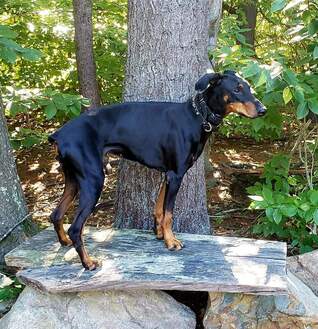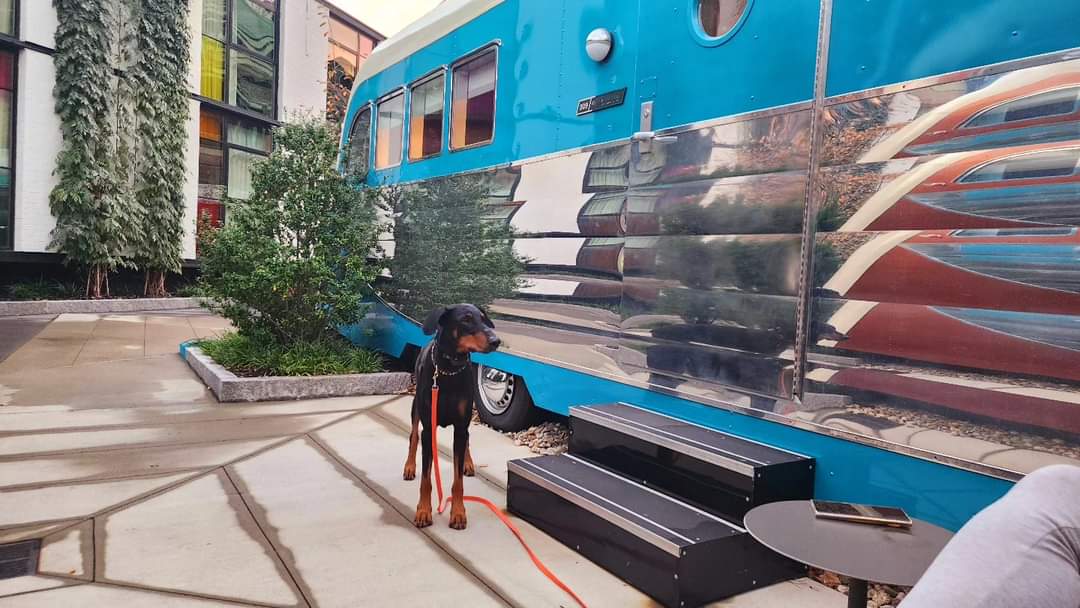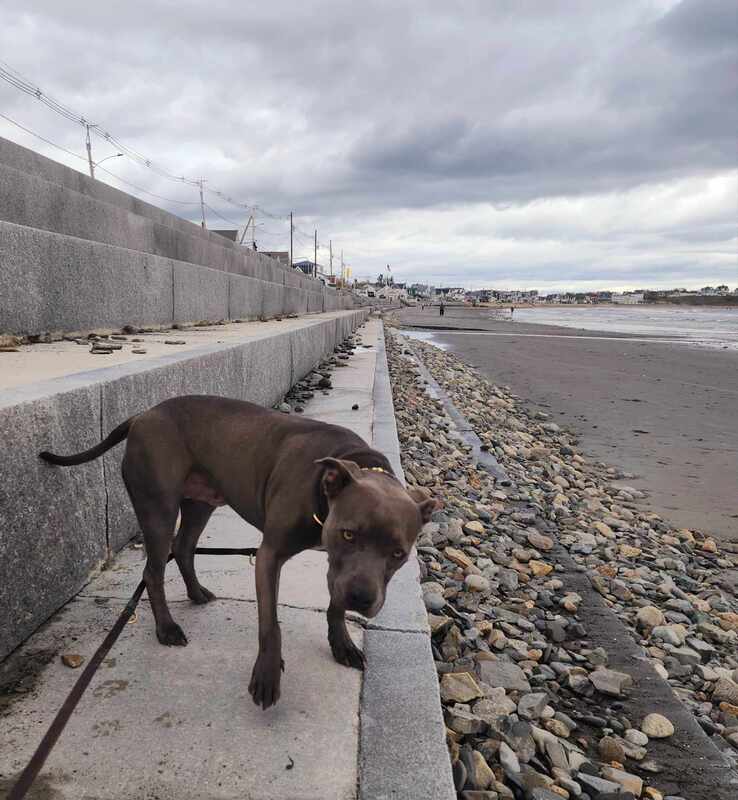| At the beginning of Week 9, I made sure to do a lot of videos. I hope to string these together someday, to show the progress that is made over time. Alas, I am a much better dog trainer than "digital creator'. Perhaps some more practice will make perfect. We were mostly inside this week, as I had a lot of client dogs over needing to be trained, and I was pooped by 6 pm. This weekend, we are going to do a lot of "on the road training"m as I have am even busier week coming up next week. LaLa does help out on occasion by being the distraction in a crate for private lessons. In day training, she is a moving distraction. |
Anyway, LaLa and I have been working, and here are some videos that show some of our progress below:
Week 5 LaLa Training Blog: More Exposure to Outside Distractions and Dropping the Leash Inside6/2/2024
 Environment plays a big role when your training your dog. Dog training usually begins in a non distracting environment. Later on distractions are used in order to further train your dog to planned upon goals. In the beginning non distracting environments are largely controllable by simply training inside in a quiet room without anyone around. The unexpected distraction (spouse, kids, knock on the door, car driving up) may happen, but they are not expected or planned for. For those who also reside in your home, you can let them know not to disturb you when you are training. In those instance, you just have to shoo whoever came in away (or settle the dog after the truck leaves) and find your training footing again to end on a good note. As you move forward to distractions, environments can be somewhat controlled or predicted for dog training with good planning. Non distracting environments can have creative distractions added to them on purpose.  Cities can be hard places to visit with your pets, in this case our dog, Shana. As it is, Shana has never really warmed up to crowds of people especially with dogs. I do train a lot with Shana, but city area training somewhat limited due to automobile troubles. Nonetheless, Shana is trained to an extent, and we felt it would be far more stressful to have her with a strange pet sitter. Cities are consumed with noises, crowds, and actually far more wildlife than you might see in the country on a daily basis. One thing did not think of is the amount of harmful objects that can be on the ground during your exploring in the city, especially off main roads or those that tourists know of. The cars drive aggressively, which can be a danger to you and your dog, if you don't take that into account. Often there are celebrations going on to attract the tourists and their money as well (in our case we went to a Jethro Tull Concert on our last evening). This post is about a few things that I learned, and a few things I considered while getting Shana ready in the short-term for our trip. The Place Command is Excellent Obedience and Behavioral Exercise (Part 1 of The Command Series)9/13/2023  Puppy Duke learning the place command. Puppy Duke learning the place command. The place command is one of the first things I start to teach with many dogs. This command combines a send away, a stay, a stay within a barrier, impulse control and calming exercise all in one. Additionally, this can be the very start on walking on leash with a puppy or dog. Some dog owners and trainers may only utilize the stay portion, but I feel the send away portion is very valuable as time goes on. Let me explain a little bit about this very useful exercise. |
Author, Robin RubinOwner and Head Dog Trainer in Maine, Robin Katherine Rubin, started her Maine dog training business in September 2004. Our dog training facility is located in Southern Maine in York Beach and we help families enjoy their dogs more, making sure they listen reliably and resolving unwanted behaviors. Archives
July 2024
Categories
All
|






 RSS Feed
RSS Feed